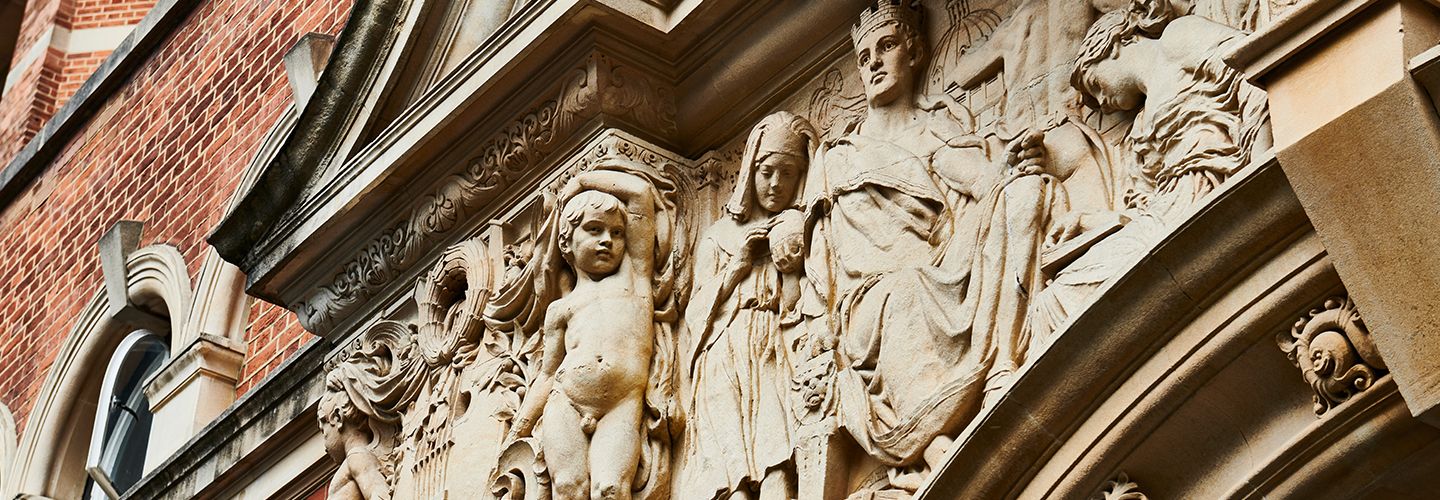
City’s history
City's tradition of providing high quality education relevant to business and the professions dates back 160 years. For many of our graduates, time spent at City laid the groundwork for leadership, innovation and excellence that have changed the world we live in.
Click on a time period below to discover its significance in City's heritage.
Pre-1900
1852 - The Inns of Court School of Law founded
The Inns of Court School of Law was founded. One of the earliest providers of legal education in London, it would become a part of The City Law School in 2001.
1876 - Notable Alumni
Herbert Henry Asquith, British Prime Minister from 1908 to 1916, graduated from The Inns of Court School of Law. Asquith was the first of many global leaders, including Mohandas 'Mahatma' Gandhi, Clement Attlee, Jawaharlal Nehru, Margaret Thatcher and Tony Blair, to pass through what is now The City Law School.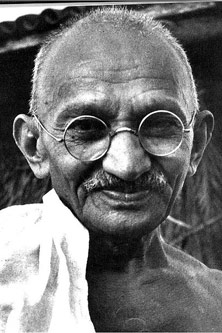
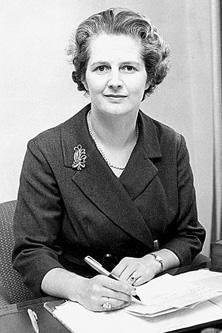
1877 - St Bartholomew's College of Nursing founded
St Bartholomew's College of Nursing was founded, affiliated with London's oldest hospital, St Bartholomew's. The College of Nursing would later be incorporated into the School of Health & Psychological Sciences at City, University of London.
1891 - Northampton Institute planning begins
Planning began for the Northampton Institute, to be built on what is now the main part of City's present-day campus. The land was bequeathed by the Marquess of Northampton and the Earl of Compton and generous benefactors included The Worshipful Company of Skinners and The Worshipful Company of Saddlers.
1894 - Northampton Institute founded
 The Northampton Institute was founded. With the objective of promoting 'the industrial skill, general knowledge, health and wellbeing of young men and women belonging to the poorer classes', the first departments established in the Institute were Mechanical Engineering and Metal Trades, Artistic Crafts for Industry, Applied Physics and Electrical Engineering, Horology, Electro-chemistry and Domestic Economy.
The Northampton Institute was founded. With the objective of promoting 'the industrial skill, general knowledge, health and wellbeing of young men and women belonging to the poorer classes', the first departments established in the Institute were Mechanical Engineering and Metal Trades, Artistic Crafts for Industry, Applied Physics and Electrical Engineering, Horology, Electro-chemistry and Domestic Economy.
1898 - College Building opens
The College Building was officially opened by the Lord Mayor of London.
1900 to 1909
1903 - Technical Optics department founded
 The Technical Optics department was established within the Northampton Institute, marking the beginning of City's important contribution to the study of optometry.
The Technical Optics department was established within the Northampton Institute, marking the beginning of City's important contribution to the study of optometry.
1908 - Olympic Games host venue
 The University Great Hall played host to the boxing competition of the first London Olympic Games, Great Britain excelled in the competition, winning 14 of 15 medals awarded. The University swimming pool (now a study area for PhD students) was also used for the Olympic Games.
The University Great Hall played host to the boxing competition of the first London Olympic Games, Great Britain excelled in the competition, winning 14 of 15 medals awarded. The University swimming pool (now a study area for PhD students) was also used for the Olympic Games.

1909 - Aeronautical Engineering courses introduced
 The Northampton Institute introduced courses in Aeronautical Engineering, the
The Northampton Institute introduced courses in Aeronautical Engineering, the
first offered in the United Kingdom. In this year, the Institute also presented its first candidates for University of London BSc degrees.
1910 to 1919
1914 to 1918 - World War I
During the First World War, the engineering faculties of the Northampton Institute were used to produce munitions and telegraph sets and members of academic staff helped to train munitions workers and service personnel. All departments also participated in schemes to retrain and find employment for wounded ex-servicemen.
1920 to 1929
Department of Optometry and Visual Sciences founded
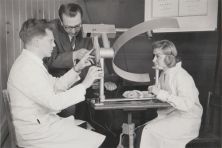 With the founding of the Department of Optometry and Visual Sciences, the Northampton Institute became one of the first establishments in the world to educate optometrists. City, University of London remains the only institution in London to offer a BSc in Optometry.
With the founding of the Department of Optometry and Visual Sciences, the Northampton Institute became one of the first establishments in the world to educate optometrists. City, University of London remains the only institution in London to offer a BSc in Optometry.
1930 to 1939
1939 - Outbreak of World War II
The Northampton Institute once again played a key part in the war effort, providing training courses for members of the RAF, Army and Navy in skills ranging from optics manufacturing to wireless mechanics.
1940 to 1949
1940 to 1945 - World War II
The University buildings suffered bomb damage, notably the Great Hall. Post-war reconstruction work would be completed in 1953.
1946 - A period of expansion begins
The Institute began a period of expansion that would set the stage for its transition into City University London in 1966. Between 1946 and 1956 the number of courses grew, student numbers increased and academic research became more important, as faculty members were given the chance to take research leave from teaching and appoint research assistants.
1950 to 1959
1955 - Summer school lays groundwork for British Computer Society
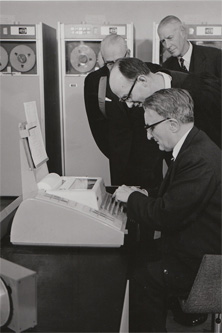 The Northampton Institute offered a summer school on the use of electronic digital computers and calculators in accountancy, costing and management, laying the groundwork for the foundation of the British Computer Society.
The Northampton Institute offered a summer school on the use of electronic digital computers and calculators in accountancy, costing and management, laying the groundwork for the foundation of the British Computer Society.
1957 - Northampton College of Advanced Technology
Following a government review highlighting the growing need for technical and scientific personnel in British industry, the Northampton Institute became Northampton College of Advanced Technology, with a mandate to increase student numbers and offer advanced degrees whilst retaining the former Institute's close links with industry.
1960 to 1969
1961 - Department of Social and Industrial Studies founded
The Department of Social and Industrial Studies was formed, offering classes in social sciences, industrial administration and management studies.
1962 - Research plays a key role
Research assumed an increasingly important role in the life of the College, as Consultant Lecturers were appointed, a growing number of Science Research Council grants and funding for Research Fellows and Senior Research Fellows was awarded.
1963 - Government recommends university status
A Government Report into higher education recommended that the Northampton College of Advanced Technology become a university, retaining its balance between education and research whilst increasing its postgraduate activity.
The groundwork necessary for this transformation began with the construction of the first halls of residence, close to the City of London.
1966 - University created by Royal Charter
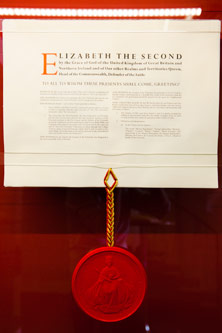 The University was created by Royal Charter. Dr James Tait was appointed as its first Vice-Chancellor and Oliver Thompson its first Pro-Chancellor. Together they approached the Lord Mayor of London and his enthusiasm for an association between the City and the new University led to a unique arrangement that continues today, in which the Lord Mayor in office is invited to be the Rector (previously Chancellor) of City.
The University was created by Royal Charter. Dr James Tait was appointed as its first Vice-Chancellor and Oliver Thompson its first Pro-Chancellor. Together they approached the Lord Mayor of London and his enthusiasm for an association between the City and the new University led to a unique arrangement that continues today, in which the Lord Mayor in office is invited to be the Rector (previously Chancellor) of City.
In 2015, City was placed 97th in the Times Higher Education 100 Under 50 ranking of the world's best universities under the age of 50.
In 2016, City joined the University of London, becoming a self-governing College with a new supplemental Charter.
1967 - Vision for 1977
The Development Committee of the University drafted a vision that would shape the next 10 years and would see City evolve into a University dedicated to engineering, science, business, management studies and computing.
1969 - Drysdale and Centenary Buildings open
The Drysdale and Centenary Buildings were completed.
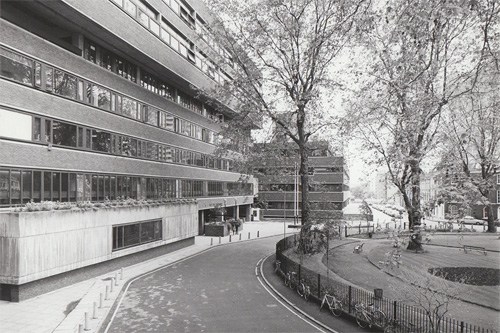
1970 to 1979
1970 - University Building opens
The University Building in Northampton Square was opened in 1970.
1971 - Apollo astronauts visit City
The astronauts of Apollo 15 visited City University London and presented Vice-Chancellor Tait with a piece of heat shield from the Apollo 15 command module.
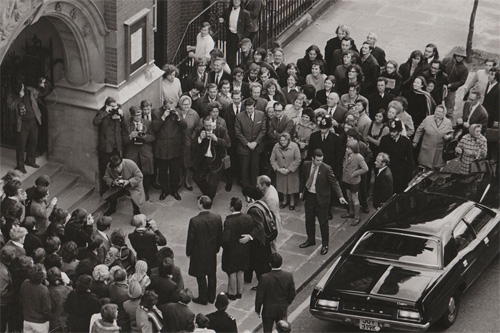
1974 - Tait Building opens
Another building in Northampton Square - the Tait Building - was completed and opened in 1974.
1975 - First Music degree course launches
 City offered a Diploma in Journalism, capitalising on its proximity to Fleet Street and its long experience of educating for the professions.
City offered a Diploma in Journalism, capitalising on its proximity to Fleet Street and its long experience of educating for the professions.
1977 - Centre for Legal Studies founded
The Centre for Legal Studies was established and the Graduate Diploma in Law was offered.
1977 - Spin-out company City Technology Ltd founded
City Technology Ltd was established to develop a new oxygen sensor, designed by academics from City. The sale of the company in 1993 for £24.5m marked one of British academia's most successful commercialisations of intellectual property.
1978 - Professor Raoul Franklin CBE appointed Vice-Chancellor
Professor Raoul Franklin was appointed Vice-Chancellor. He would remain in post for 20 years and be made a CBE in 1994 for his service to the University.
1980 to 1989
1982 - Focus shifts to postgraduate education
The cuts to higher education funding by the new Conservative administration deeply affected City and other former Colleges of Advanced Technology, leading to redundancies and an increased strategic focus on postgraduate education.
1986 - Dean becomes Thatcher advisor
The Dean of City University Business School, Professor Brian Griffiths, resigned his Chair at City to become Margaret Thatcher's chief policy advisor.
1988 - School of Engineering founded
The School of Engineering was formed under the guidance of Professor Ludwik Finkelstein, its first Dean.
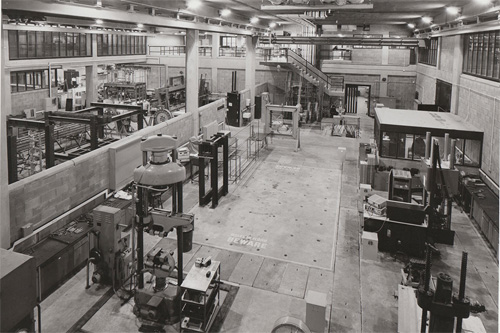
1990 to 1999
1990 - First Law degree courses offered
Undergraduate degrees in Law were offered for the first time.
1990 - School of Informatics founded
The School of Informatics was formed, bringing together the departments of Information Science, Business Computing and Computer Science.
1994 - 100 years of the institution

The University celebrated 100 years since the founding of the Northampton Institute with a series of high profile public lectures and a gala concert in The Guildhall.
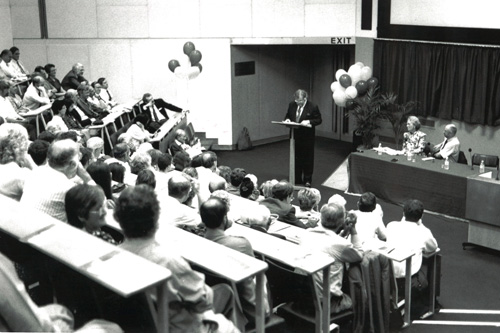
1995 - Health-related institutions join City
St Bartholomew's School of Nursing and Midwifery was incorporated into the University; it would become part of the School of Health & Psychological Sciences. In the same year, the Charterhouse College of Radiography was also incorporated into the University.
1998 - Professor David Rhind appointed Vice-Chancellor
Professor David Rhind was appointed Vice-Chancellor of City University London, remaining in the post until 2007.
2000 to 2009
2001 - Business School becomes Sir John Cass Business School
 Following a generous donation from the Sir John Cass Foundation towards the Business School's new building project, the School was renamed the Sir John Cass Business School. The Foundation, one of London's oldest and largest education charities, continues to support the Cass Business School. Her Majesty the Queen opened the new building two years later.
Following a generous donation from the Sir John Cass Foundation towards the Business School's new building project, the School was renamed the Sir John Cass Business School. The Foundation, one of London's oldest and largest education charities, continues to support the Cass Business School. Her Majesty the Queen opened the new building two years later.
2001 - The City Law School expands
The Inns of Court School of Law was integrated into The City Law School.
2003 - School of Arts founded
The School of Arts was formed, bringing together the departments of Music, Journalism and Publishing, and Cultural Policy and Management.
2004 - Social Sciences Building opened
 The Social Sciences Building - now named the Rhind Building in honour of past Vice-Chancellor Professor David Rhind - was opened.
The Social Sciences Building - now named the Rhind Building in honour of past Vice-Chancellor Professor David Rhind - was opened.
2010 to 2019
2010 - Professor Sir Paul Curran appointed Vice-Chancellor
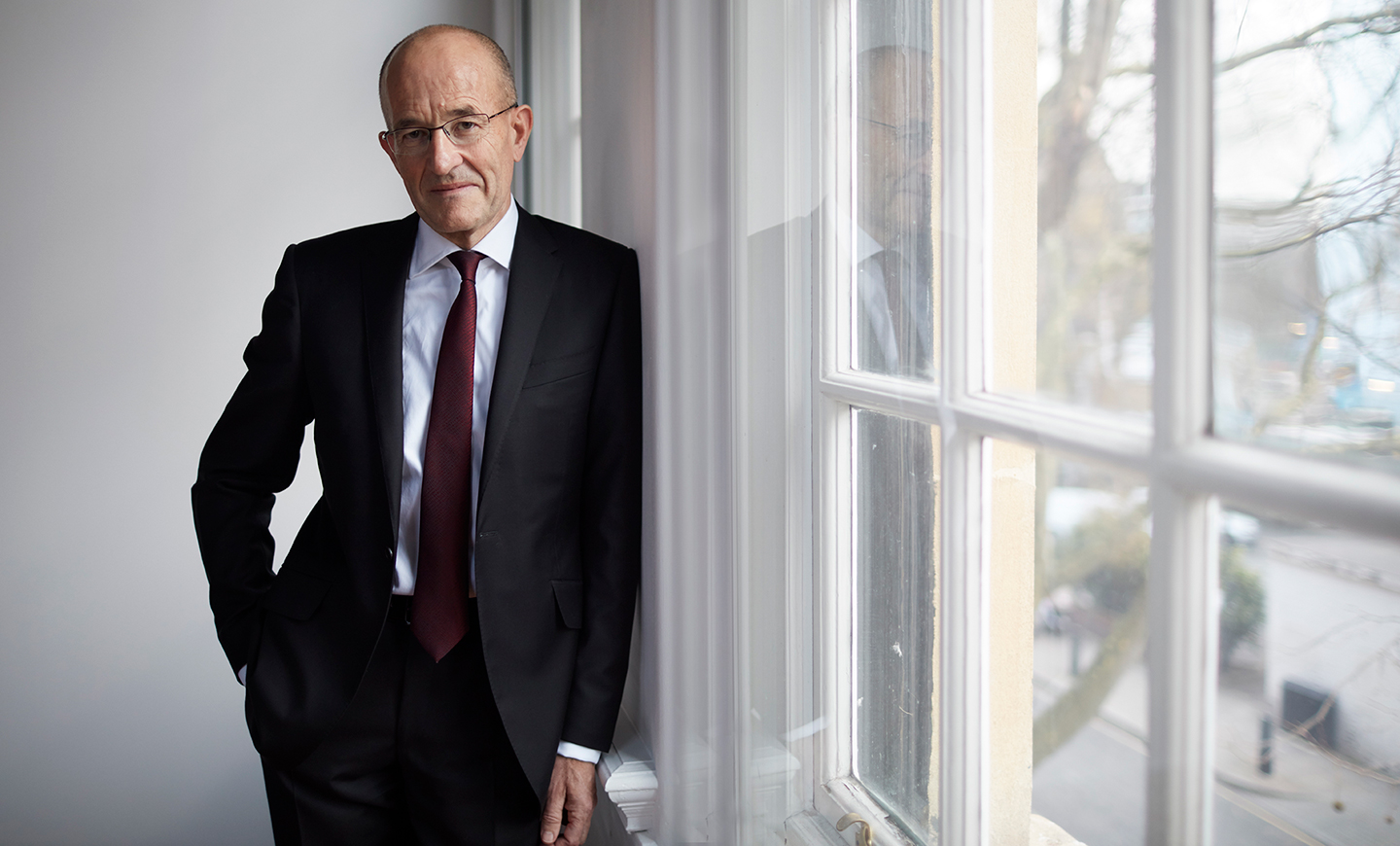
Professor Sir Paul Curran served as City’s seventh Vice-Chancellor from 2010 - 2016.
He then served as President from 2016 – 2021 after City joined the University of London federation.
Sir Paul was knighted in the 2016 New Year Honours for services to higher education.
2010 - City ranks in top 30 higher education institutions in the UK
City was ranked in the top 30 higher education institutions in the UK by the Times Higher Education Table of Tables.
2011 - Vision for 2016
City University London agreed its 2016 Vision.
2012 - Environmental initiatives recognised
In July 2012, City's Environmental Management System was awarded the EcoCampus Platinum Award and ISO 14001 certification in recognition of the University's commitment to reducing its environmental impacts and to integrating sustainability into its daily services and activities.
2013 - George Daniels remembered
Launch of inaugural annual lecture and iconic University Clock named after George Daniels, a City alumnus and one of the world's greatest watchmakers.
2013 - Square Mile campus opens
Cass Executive Education opens at 200 Aldersgate Street, making it one of the largest Executive Education facilities in the Square Mile.
2016 - City joins the University of London
Following a period of significant progress, City joined the University of London federation on 1st September 2016. The University of London was founded by Royal Charter in 1836. City changed its name to "City, University of London" to reflect this change.
2017 - City, University of London receives a Silver award in the Teaching Excellence Framework (TEF).
The Higher Education Funding Council for England (HEFCE) announced that City, University of London achieved a Silver award in the Teaching Excellence Framework (TEF).
The TEF is a new government initiative designed to encourage further the enhancement of quality in teaching and learning in Higher Education.
2017 - Opening of City's new main reception and Pavillion
Her Royal Highness the Princess Royal, Chancellor of the University of London, opens the transformed Northampton Square main reception and Pavilion.
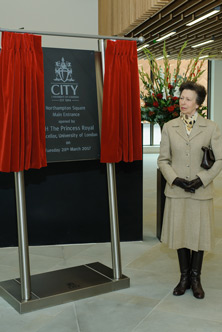
2019 - City's 125th anniversary
City celebrates its 125th anniversary with a series of events and activities.
2020 to present
2020 - City commits to the United Nation’s Global Goals
City's Sustainable Development team uses the UN's Global Goals to underpin their work and improve City's sustainable performance.
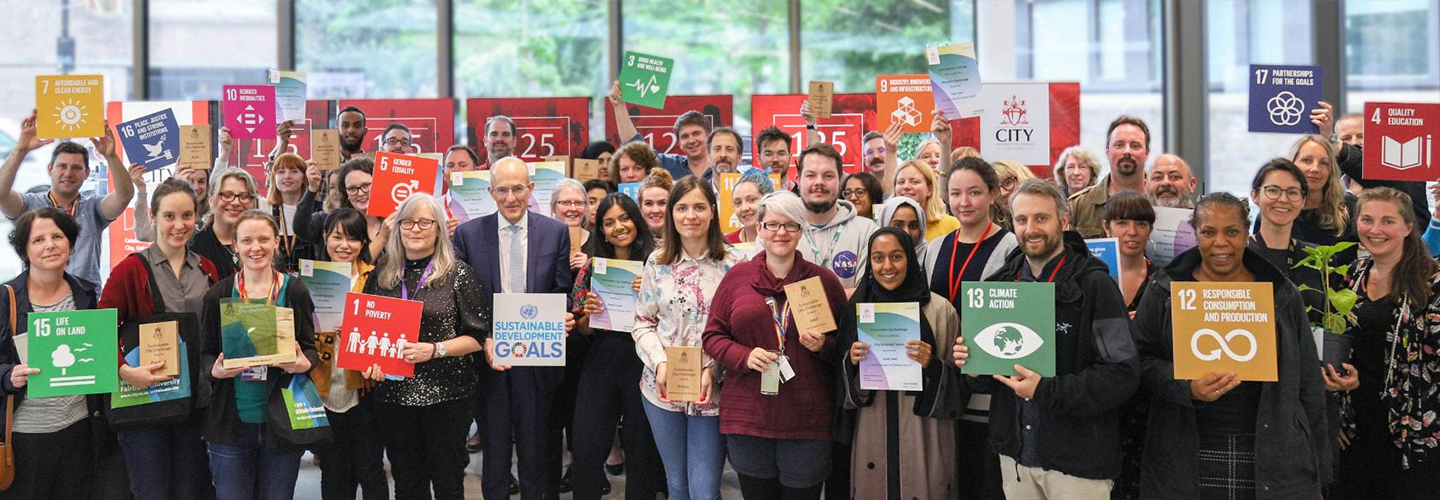
2021 - Cass Business School is renamed Bayes Business School
Cass Business School is renamed Bayes Business School after the Reverend Thomas Bayes, creator of the Bayes Theorem.
2021 - Professor Sir Anthony Finkelstein CBE FREng appointed President of City
Anthony joined City from his position as the Government’s Chief Scientific Adviser for National Security, which he held from 2015-2021.
Previously he held the positions of Dean of the UCL Faculty of Engineering Sciences and Head of UCL Computer Science.
His scientific work is in the broad area of systems engineering.

2022 - City’s Vision and Strategy 2022–2030 is launched
2022 - City acquires Urdang Academy
City acquires the prestigious performing arts school, Urdang Academy, based at Finsbury Town Hall.
2022 - City celebrates its REF results
The results of REF 2021, published by UKRI in May 2022, found 86% of City research rated as world leading 4* (40%) and internationally excellent 3* (46%) quality.
2022 - City creates two new schools
The School of Arts and Social Sciences is divided to become the School of Communication & Creativity and the School of Policy and Global Affairs.
2023 - City celebrates its TEF results
City is awarded Silver overall in the Teaching Excellence Framework (TEF) with Gold in the Student Outcomes aspect.
2023 - Bayes opens 33 Finsbury Square
Bayes opens its new building at 33 Finsbury Square. It becomes home to students on the MBA, PhD and Executive Masters’ Apprenticeship Programmes, and is also the new hub for Executive Education.
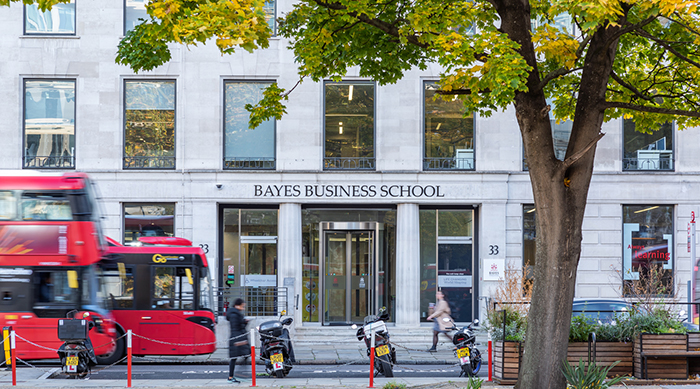
Historic sources of funding
Read City’s review of its historic sources of funding which has determined if there were any links with the historic transatlantic slave trade and made appropriate and considered recommendations.